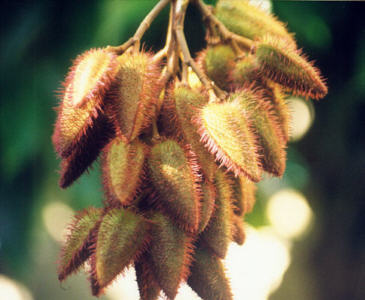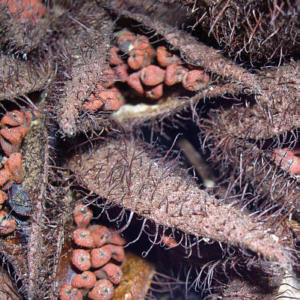

A stem from an Annatto tree and dried capsules that have opened to show the red seeds.


|
cis-bixin (monomethyl ester) |
trans-norbixin (dicarboxylic acid) |
 Return to Chemistry, UWI-Mona,
Home Page
Return to Chemistry, UWI-Mona,
Home Page
Copyright © 2004-2014 by Robert John Lancashire, all rights reserved.
Created and maintained by Prof. Robert J. Lancashire,